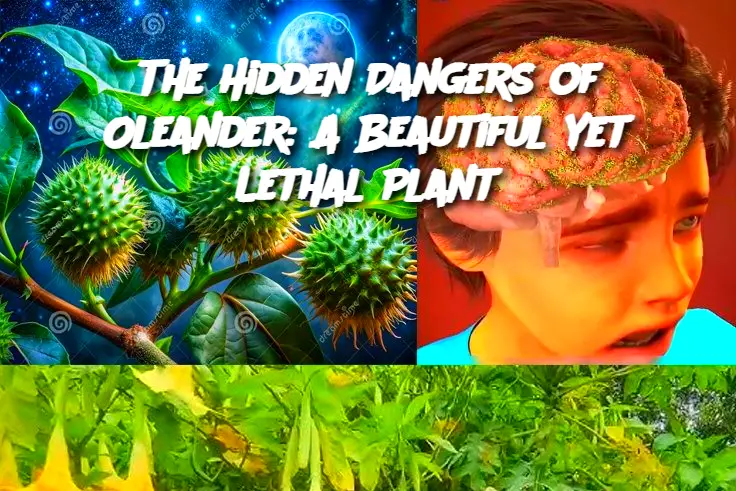ADVERTISEMENT
Azalea (Rhododendron): Like oleander, azaleas contain toxic compounds that can cause nausea, vomiting, and in severe cases, death if ingested.
Foxglove (Digitalis purpurea): This beautiful flower contains digitalis, which can disrupt heart function, leading to arrhythmias or even death.
Lily of the Valley (Convallaria majalis): While highly fragrant, this plant contains cardiac glycosides, similar to oleander, that can cause dangerous effects on the heart.
Dieffenbachia (Dumb Cane): This indoor plant can cause irritation and swelling of the mouth and throat if chewed.
If you’re curious about which other plants to avoid or handle with caution, it’s wise to research common ornamental species that may have toxic properties.
Frequently Asked Questions:
Can oleander poisoning be treated? Yes, if someone is suspected of poisoning from oleander, it’s crucial to seek immediate medical attention. Treatment typically involves stabilizing heart function, administering activated charcoal, and providing other supportive measures such as IV fluids and medications to regulate the heart rate.
What are the symptoms of oleander poisoning? Symptoms can vary depending on the amount ingested, but common signs include nausea, vomiting, abdominal pain, dizziness, irregular heartbeat, and in severe cases, death.
Is it safe to grow oleander in my garden? While oleander can be safely grown in your garden, it is essential to exercise caution. Keep it away from children and pets, avoid contact with its sap, and ensure it is properly disposed of when pruned.
Can I use oleander as a medicinal plant? While some cultures have used parts of the oleander plant for medicinal purposes, this is highly dangerous. The toxicity of oleander far outweighs any potential benefits, and self-medication with this plant is strongly discouraged.
What should I do if I suspect poisoning from oleander? If you or someone else is suspected of ingesting oleander, contact a poison control center immediately and seek emergency medical attention. Prompt treatment is essential to prevent severe complications.
Conclusion:
Oleander is a visually captivating plant, but its toxic properties make it a dangerous choice for households with children and pets. Whether you’re growing it in your garden or simply encountering it in nature, it’s essential to handle oleander with caution. By understanding the risks and taking appropriate safety measures, you can enjoy its beauty while minimizing the dangers associated with this deadly plant. Always prioritize safety, and remember that beauty should never come at the cost of well-being.
ADVERTISEMENT
